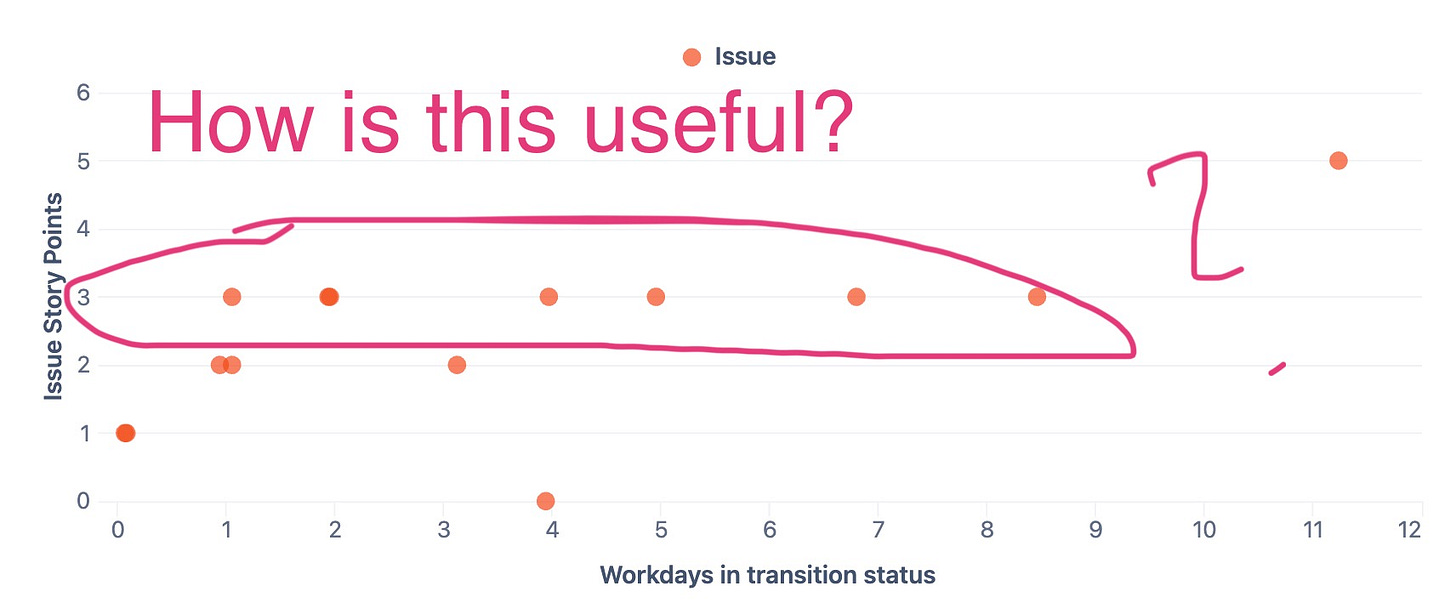Are estimates the comfort blanket of the corporate world? Like trying to predict the weather five days from now while standing in a hurricane. But hey, at least you feel in control while the roof flies off.
I recently sat down with
host of the Scrum Master Toolbox Podcast and the OG of the #NoEstimates movement to discuss why we’re still collectively clinging to this outdated ritual. Spoiler: it has nothing to do with delivering value and everything to do with keeping up appearances.Let’s get to the juice. Vasco didn’t hold back:
“Estimates are the tail wagging the dog.”
We’ve twisted the whole conversation. Stakeholders want outcomes—like 5% more user retention—but instead of talking strategy or customer value, we feed them a neat list of tasks and say, “March.” That’s not forecasting. That’s professional gaslighting.
Code is a liability, not an asset.
Every line you ship is more maintenance, more bugs, more complexity. And yet our planning processes reward teams for writing more code, not for creating more value. Why? Because project management still rules the roost. And project management loves its Gantt charts, even if they point straight to nowhere.
The illusion of control is costing you real money.
We keep estimating because it feels like control. But most projects are scoped before we even know who’s working on them. It’s financial cosplay. If your stockbroker used this level of guesswork, you’d fire them. So why are we using it to run our businesses?
It’s all theater.
One dev told Vasco: “If I say it’ll take two weeks, my manager leaves me alone for two weeks. If it takes longer? I just say, ‘two more weeks.’” It’s not about delivery—it’s about staying off the radar. Estimates aren’t planning tools; they’re shields from micromanagement.
Data doesn’t lie, but your story points do.
We looked at real team data: 3-point stories taking anywhere from a day to 100+ days. Estimates weren’t just wrong—they were irrelevant. In fact, replacing all story point values with “1” only changed the forecast by 8%. And yet, entire PI plannings are spent trying to look scientific about numbers that clearly mean nothing.
🧠 So what’s the alternative?
Track throughput, not predictions. Forecast using what you actually get done.
Fund teams, not projects. Stop buying outputs and start investing in outcomes.
Experiment like product engineers. Don’t code until you’ve validated the need.
Plan like investors. Put money in, observe results, pivot or persevere. Repeat.
Vasco nailed it:
“We should manage software as an investment, not a project.”
The biggest shift? Realizing that Agile isn’t about “velocity,” it’s about adaptability. And estimates, for all their ritual and rigor, are a relic from a time when we thought the future could be locked in a spreadsheet.
Experiment
🧪 Want to try this in your team? Start small. Ditch the Fibonacci sequence, track your actual cycle time, and run a Monte Carlo simulation. Watch how your forecasts suddenly get more honest, more useful—and way less stressful.
And next time someone says “but we’ve always estimated,” smile and say, “Yeah, and how’s that working out for us?”
















Share this post